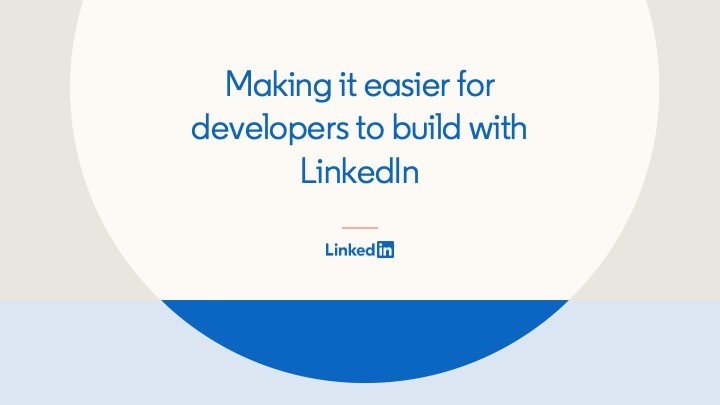Which apps satisfy these Web3 critieria? Decentralized on open blockchains, financialized with staked tokens, nonfungible with soulbound collectibles, social with seasonal humans, and cryptographic with zero-knowledge proofs.
Decentralized (Blockchains)
- Open: Any 100+ people can run any actions (submit, execute, verify, settle).
- Free: Any can fork or compose its values (patents, codes, assets, deploys).
- Safe: Any can dispute for valid transactions against 1-second finality.
Financialized (Tokens)
- Swap: Trade with any assets at a liquid price below 1% fees.
- Stake: Lend assets for any time periods above 5% fixed rate.
- Bridge: Cross assets with 10 ecosystems at 3% take rate.
Nonfungible (Collectibles)
- Name: Multiple anonymous identities, with contextual displays.
- Badges: Earn only by time and skills, with global rankings.
- Soul: Bound among community, no transfer but revocation.
Social (Humans)
- Circle: Follow at most 10 people or 3 topics weekly.
- Focus: Like at most 10 posts or reply 3 conversations.
- Seasons: Decay beyond 3 months or 30-mile locality.
Cryptographic (Proofs)
- Succint: Rollup millions of actions in 1-kilobyte zero-knowledge states.
- Private: Mixup any 100 end-to-end actions within hours.
- Fair: Cannot bias or predict any choices, but verifiable.
RADICAL Market for Internet Domains, Crypto Names & Top-Level .country
Harmony is developing a maketplace, called RADICAL, specialized for domain names as nonfungible tokens (NFT). First examples are Web2 Internet domains like .com and .xyz. Second are Web3 crypto names like Ethereum Name Services or ENS for .eth, Unstoppable Domains or UD for .x, as well as ONE Names or 1N for .1.
harmony.one

FAIR: "3-Body Problem" of Price & Rent on Nonfungible
How to sustain an economy of nonfungible resources such as land assets, domain names, or social ranks? What are the optimal parameters with demand-based recurring fees or single land value tax as radical solutions? Can price, tax and rent be FAIR to all 3-body of owner, renter and stakers?
harmony.one
/w=640,quality=90,fit=scale-down)
Harmony 2023: Uniform Scaling & Onchain Security
➡️ Technical Vision, Project Vision, Showcases, Integrations, Industry Leaders
harmony.one

Industry Showcases
Dark Forest: Lessons from 3 Years of On-Chain Gaming
We'll present an overview of learnings from 3 years of building and running Dark Forest, the first fully decentralized MMORTS, including: why ZK is important for games, what a crypto-native game is and why we should care, designing for emergent player behavior, pushing the limits of Ethereum devex, and social consensus and legitimacy - why is Dark Forest more like chess than League of Legends?
archive.devcon.org

ETHdos - Deep Dive
Presenting ETHdos numbers: measuring degrees of separation of people (akin to Bacon/Erdos numbers) while hiding individual friendships entirely. This is a first of its kind social experiment demonstrating the composability properties unlocked by recursive ZK-SNARKs. Recursive ZK-SNARKs are fundamentally cool technology.
ethdos.xyz

Autonomous Worlds Arcade
Location: Agora Bogotá Convention Center, basement Wednesday Oct 12 4:00 - 7:00pm Sky Strife is a new, fully on-chain RTS game. The goal is to build armies, defeat your opponents, and be the first to escape with loot! Sky Strife takes place in the world of Amalgema, which lies at the bottom of our universe.
0xparc.notion.site
/w=640,quality=90,fit=scale-down)
Curio Game Doc
🛠️ Summary of update
0xcurio.notion.site

Moving Castles - Modular and Portable Multiplayer Miniverses
"With a last squeak the castle lifted, the crew cheered as we could see across the dark forest for the first time, our eyes locked on the arid wastelands on the horizon. Now back to chat, this machine won't move itself" Trust and a large variety of other semi-private communities-from pay-to-enter-discords, game guilds, blockchain communities, subscription-mediated newsletters, and group chats- are what Yancey Strickler calls .
movingcastles.world

Zero-knowledge proofs, a board game, and leaky abstractions: how I learned zk-SNARKs from scratch
A great way to learn a new skill is to build something with it. This is particularly true in the cryptocurrency and blockchain space, where accessible documentation and usable software libraries often lag behind research and development. In fact, the more esoteric a field is, the higher its barriers to entry.
weijiek.medium.com

Topology
Topology is defining onchain reality with the mission to unlock humankind's true potential in ever-inclusive realities.
www.topology.gg

Harmony’s ZKProof Games
- 🌳 Blue Forest (ZKProof strategy game) is a Play-to-Earn version of Dark Forest, which is gas-expensive even on Gnosis Chain (sometimes queuing up into weeks for a game turn). Also, Blue Forest allows tournament betting for cash prizes as well as for no-loss options.
Blue Forest
Blue Forest, the world's first decentralized real-time strategy game. Built on Ethereum with zkSNARKs.
ephemeral-cheesecake-94204a.netlify.app

Gaming Platform: wallet integrations, tournament escrow, embedded marketplaces
Harmony 2023: Uniform Scaling & Onchain Security
Harmony in 2026: Scaling Web3 via ZKP & DAO
Harmony - Research Engineer
Harmony is an open and fast blockchain. Our mainnet runs Ethereum applications with 2-second transaction finality and 100 times lower fees. We are an open platform for your assets, collectibles, identity and governance. 🚀 Building a (Rocket)Ship We are a Day-1 startup. Blockchains are becoming the foundation of the global economy, yet their adoption is at only 1%.
jobs.lever.co
zkDAO - Succinct, Private, Fair
Harmony is committing $10M for zkDAO and privacyDAO, bringing the best research to production, especially for zero-knowledge proofs and other cryptography primitives. We should focus on products with 100x benefits, magical uses, or universal constructs. The following 6 products are the most ready for 2022.
harmony.one

Zero-knowledge proofs, cryptographic primitives, and privacy. That's where the 100x benefits and the magical use cases come in. We are focusing on ZK innovations that are the most likely to reach millions of users in 2023. We are most interested in universal ZK constructs that are the building blocks for Web3. In particular, here are six ZK products that already have prototypes on mainnet. The first is compressing computations and states to succinct representations – namely, low-fee zkEVM rollups, trustless Flyclient bridges, and stateless Non-Interactive-PoPoW clients. The second is protecting privacy across multiple chains and Web2-to-Web3 actions. For example, cross-chain coin mixers like Tornado – which is a top use case with 35K users and $6M revenue; Ethereum Foundation's Semaphore Project now enables anonymous authentication and voting. Lastly, fairness is now guaranteed on blockchain. Verifiable Delay Functions (VDF) will be a key primitive for randomness in games and lotteries; anti-collusion for quadratic funding will be critical for anonymous and open grants.
Zero-Knowledge University (zku.ONE)
Enrollment for the July-August cohort is closed. Admission results will be announced via email by July 1, 2022.
zku.one

Final Projects by ZKU Graduates 👩💻👨💻
ZKProof Games
The Strongest Crypto Gaming Thesis
Crypto is not an incremental innovation. Rather, it unlocks fundamentally new ways of doing things that were not possible before. This is true across a wide set of domains: corporations reimagined as decentralized autonomous organizations (DAOs), traditional financial vehicles reimagined as permissionless DeFi protocols, legal agreements reimagined as smart contracts, and other constructs that we don't even have the language to describe yet.
gubsheep.substack.com

0xPARC
Supporting application R&D on Ethereum and decentralized platforms.
0xparc.org

Dynamics among categories of creative endeavors
Summary: In the context of individual pursuit and company pursuit, any creative endeavor could be put into one of five categories: Vision, Strategy, Design, Engineering, Science. Going top-down, vision leads strategy, which leads design, which leads engineering, which leads science. Going bottom-up, science informs engineering, which informs design, which informs strategy, which informs vision.
www.guiltygyoza.xyz
Dark Forest Blog
Nightmarket is a Dark Forest plugin that allows players to buy and sell planet coordinates. Players can now use this zero knowledge & trustless feature to gain an upper-hand or simply to turn a profit. You can directly download and play with the plugin here, while the team works on submitting it as an official in game plugin.
blog.zkga.me

MUD - an engine for autonomous worlds
MUD is an engine for autonomous worlds.
mud.dev
ZKProof Progress
0xPARC
Supporting application R&D on Ethereum and decentralized platforms.
0xparc.org

ZKPs: Privacy, Identity, Infrastructure, & More
The potential of zero knowledge cryptography and its applications to privacy, digital identity, decentralized systems, and more.
archive.devcon.org

- Private key management is one of the key issues to be solved on the road to mass adoption of blockchains like Ethereum. Smart contract based wallets like the Gnosis Safe are laying the foundation to solve this problem by allowing different types of access control. The talk gives an overview of the different approaches developed to allow account recovery beyond seed backups and explains how to implement social recovery to ensure recoverability without compromising privacy.
- Semaphore is a generalised zero-knowledge signalling system which can be deployed to fulfil various privacy use cases, such as a mixer and anonymous whistleblowing. This hands-on workshop will guide participants through a high-level explanation of how Semaphore and zero-knowledge proofs work, and guide them through an anonymous chat app integrated with POAP tokens which can generate and verify said proofs.
- Since Ethereum transactions are fully visible on-chain, it is possible to trace value transfers and surveil users' financial activity. This state of affairs deprives users of privacy beyond mere pseudonymity. Some workarounds, like using a centralised exchange wallet or a custodial mixing service, however, introduce a high degree of counterparty risk. The Ethereum ecosystem needs a noncustodial mixer which works through strong cryptography, rather than blind trust. To solve this, we present a trustless mixer for Ether and ERC20 tokens. It builds upon Semaphore, a zero-knowledge signalling system by Barry WhiteHat and Kobi Gurkan. Additionally, it employs a burn relay registry which incentivises third parties to pay gas fees on behalf of mixer users. In this presentation, I will show a high-level architectural overview of the mixer, dive into its underlying zero-knowledge circuits, and discuss other applications of zero-knowledge signalling.
- RLN (Rate limiting nullifier) is a construct based on zero-knowledge proofs that enable spam prevention mechanisms for decentralized, anonymous environments.
- We'll present an overview of learnings from 3 years of building and running Dark Forest, the first fully decentralized MMORTS, including: why ZK is important for games, what a crypto-native game is and why we should care, designing for emergent player behavior, pushing the limits of Ethereum devex, and social consensus and legitimacy - why is Dark Forest more like chess than League of Legends? We'll also hint at 0xPARC's next crypto-gaming experiments.
- Since the inception of Quadratic Funding, the mechanism has mainly been used to fund open source software and public goods in a Web3-centric context. Recently, Gitcoin and others have experimented with QF in new ways to empower specific ecosystems, fund localized communities, and tackle real-world issues (climate change, health, policy). As adoption grows so do barriers and scalability challenges, but many promising advancements could be the key to breaking out of the blockchain bubble.
Towards the endgame of blockchain interoperability with proof of consensus | Succinct Labs Blog
blog.succinct.xyz
ZPrize
Accelerating the Future of Zero-Knowledge Cryptography
www.zprize.io

Open Positions in Cryptology
Submit a job IACR provides a listing of open positions with a focus on cryptology. To advertise a job opportunity, please use the button to the right. Submissions should include the organization, title, description, a URL for further information, contact information, and a closing date (which may be "continuous").
iacr.org

Zero Knowledge Canon, part 1 & 2
elow, we've now culled a set of resources for those seeking to understand, go deeper, and build with all things Editor's note: a16z crypto has had a long series of the " canons", from our DAO Canon last year to our NFT Canon earlier (and before that our original Crypto Canon).
a16zcrypto.com

SBC 22: Field Notes from Science of Blockchain 2022
Field notes is a series where we report on the ground at significant industry, research, and other events. In this edition, some of the a16z crypto team members in attendance rounded up a collection of interesting talks, papers, slides and more from the DeFi Security Summit 2022 (Aug.
a16zcrypto.com

Decentralized Speed: Advances in Zero Knowledge Proofs | Andreessen Horowitz
One way to view technological advancement is through the lens of hardware: as new needs and use-cases emerge, chip manufacturers design special-purpose GPUs, FPGAs, and ASICs optimized for specific functions and software. All major industries in tech - from cloud computing, to computer graphics, to artificial intelligence, and machine learning - have evolved to demand hardware that accelerates the speed and efficiency with which computations can run.
a16z.com

zkDocs: Zero-knowledge Information Sharing
For instance, many organizations and institutions rely on carefully sharing private information and verifying its authenticity for applications from mortgage lending to college admissions. But in practice, these privacy-protecting workflows involve a series of subjective access confirmations as humans query other humans.
a16zcrypto.com

Research & Development | Ethereum Foundation Blog
Announcements related to research and development of the Ethereum protocol.
blog.ethereum.org

Practical Guide to Finality
What is finality? When you go shopping, you might have seen a sign that says, "All sales are final". If you see this sign, this implies that any purchases you make there cannot be refunded or reversed. At its core, this is also what finality means in the context of blockchain.
www.smsunarto.com

Demos & Prototypes
Mastermind
A demo of Zero-knowledge Mastermind
jessezhang.org
GitHub - nalinbhardwaj/wordlines: Mobile ZK Puzzle Game with NFT rewards
WordLines is a ripoff of NYT's Letter Boxed game on the Ethereum chain. It has a mobile client that connects to mobile wallets and uses NFTs as a reward/retention mechanism. This project was made during ETH Summer. Special thanks to @gubsheep for supporting me in this project.
github.com
GitHub - nalinbhardwaj/zordle: Wordle, but with ZK proofs!
Zordle is Wordle, but with zero-knowledge proofs. Zordle uses ZK proofs to prove that a player knows words that map to their shared grid, but does not reveal those words to a verifier. Zordle is probably the first end-to-end web app built using Halo 2 ZK proofs!
github.com
Journey to my first ZK game
I've had a passing interest in zero knowledge proofs for a long time, when I first heard of them they felt more like magic than cryptography. I learn best with a project but I hadn't had any practical need to implement anything with zero knowledge proofs until:
mirror.xyz

Clockless - HackMD
Clockless #### *~lsankar, nibnalin, phated* In [dark forest](https://zkga.me/), players don't kn
hackmd.io
Social & Curation
messari.io
messari.io
Isokratia
In this blog post, we're excited to present an application uniquely enabled by recursive SNARKs - Isokratia, a trust minimized governance platform with off-chain (free) voting. Isokratia uses recursive SNARKs to enable trust-minimized governance for off-chain voting platforms. Note that for now, we only intend for Isokratia to be a proof of concept for what's possible.
nibnalin.me

Status as a Service (StaaS) - Remains of the Day
Editor's Note 1 : I have no editor. Editor's Note 2 : I would like to assure new subscribers to this blog that most my posts are not as long as this one. Or as long as my previous one .
www.eugenewei.com

Farcaster: Protocol First
By LJW and Cameron Armstrong Last week, I had the pleasure of writing with Cameron who is the founder of VF Protocol. We decided to write about Farcaster, a relatively new and fledging decentralized social network. I met Cameron on Farcaster, then we connected over a Zoom call.
lifeincolor.substack.com

RSS+
Dan Romero I've mentioned before that the original question we set out to answer when building Farcaster was how could you make RSS competitive with a public broadcast social network like Twitter. The initial name for the protocol was RSS+. Below is the original spec for the idea.
danromero.org

Sufficient Decentralization for Social Networks
Every year, centralized social networks place more restrictions on what users and developers can do. They seem to believe that limiting choices is the path to a healthy network, while the opposite is probably true. A decentralized social network can challenge this hypothesis by making two powerful promises that centralized networks cannot.
www.varunsrinivasan.com

RDC 2022: Our Vision for the Future of Roblox - Roblox Blog
At the Roblox Developers Conference (RDC), kicking off today at the Fort Mason Center in San Francisco, thousands of top 3D artists, programmers, builders, and content creators are gathering-in person and virtually on Guilded-to network and discover new ways to drive their success. RDC is also a great time for us to share the key ...
blog.roblox.com

Human Matching
messari.io
messari.io
Braintrust DAO: A Talent Network Governed by its Community
ORB: Best place to network with web3 working professionals
I can't recommend @orbwagmi enough Since I downloaded it it's been my go-to social media app. Gasless and signless interactions in@LensProtocol and a polished UX that finally brings the type of experience to web3 social media that is on par with apps like Twitter.
orb.ac

Entre - Professional network for entrepreneurs, creators, & investors.
An entrepreneur community with the vision to provide the next generation of business networking for the future of work and the creator economy.
joinentre.com

Claim Your Profile on Decentralized Social
Join DeSo today and start exploring a new world of social media
signup.deso.com
Indorse 2.0 Ecosystem
The Indorse Ecosystem Reinvented
indorse.io

Deep Skills Protocol
Contant person in Discord: stepa.eth#7202 Target customers Protocol customers are decentralized applications that need to write and read data from the user's decentralized identity. The protocol will be used as part of the Deep Skills product decentralization process as well as many other dapps. Namely, the ones solving one of the following problems: Project management.
devpost.com

Meritverse - The Professional Network for Web3
As of now, you can link your Discord, Discourse, GitHub and soon your SourceCred and Coordinape. We're building an open data ecosystem where anybody will be able to contribute data-sources that are helpful to paint a comprehensive picture of someone as a professional.
www.meritverse.xyz

GitHub - dfinity/linkedup: An open professional network.
The LinkedUp sample application provides a simple implementation of an open professional network that demonstrates how to use inter-canister calls within a project. In the LinkedUp sample application, there are two canisters: The linkedup canister creates and stores basic profile information for a user, including work experience and educational background.
github.com
Languages & Compilers
Introducing Noir: The Universal Language of Zero-Knowledge
After 18 months of development we're thrilled to introduce Noir: the language of zero-knowledge proofs. Noir is a Rust-based domain specific language (DSL) for creating and verifying zero-knowledge proofs. It's the easiest way to write zk applications that are compatible with any proving system.
medium.com
Introducing Lurk: A programming language for recursive zk-SNARKs
We are excited to announce that the Lurk programming language repositories are now open to the public. Lurk is a Turing-complete programming language for recursive zk-SNARKs (zero knowledge Succinct Non-interactive ARguments of Knowledge) that will enable new possibilities for SNARK proofs, blockchain consensus, the Filecoin Virtual Machine (FVM), decentralized apps, data integration with IPFS and IPLD, and more.
filecoin.io

Leo: A Programming Language for Formally Verified, Zero-Knowledge Applications
Paper 2021/651 Collin Chin, Howard Wu, Raymond Chu, Alessandro Coglio, Eric McCarthy, and Eric Smith Abstract Decentralized ledgers that support rich applications suffer from three limitations. First, applications are provisioned tiny execution environments with limited running time, minimal stack size, and restrictive instruction sets.
eprint.iacr.org

We have applied the Axe Lifter and the Axe Prover for R1CS, described above in section 4.10, to verify a handcrafted R1CS gadget that represents the Blake2s hash function (the full version and also a smaller version limited to a single round). The one-round version is composed of 2,864 variables and 2,896 constraints. We establish that lifting it into logic takes under one second, and the proof (comparing it with an ACL2 specification of one-round of Blake2s) takes under a minute. The full version of Blake2s has 21,728 variables and 22,048 constraints. The proof (comparing it with our full specification of Blake2s) currently takes about 3,100 seconds. Future prover improvements may reduce that time. We are also working to craft robust sets of rewrite rules that suffice to automatically verify not just Blake2s but also a variety of other R1CS relations. For the Blake2s examples, we currently prove only the “forward” direction, that the R1CS implies the specification relation over inputs and outputs
Talent market
LinkedIn Business Highlights from Microsoft's FY22 Q4 Earnings
Today, Microsoft announced Q4 FY22 Earnings. Included in the report on the financial performance were the following LinkedIn highlights: In Q4, LinkedIn's revenue increased 26% year-over-year (29% in constant currency). We also once again saw record engagement among our more than 850 million members, a testament to how mission critical the platform is to connect job seekers with jobs, learners with skills, and marketers with buyers.
news.linkedin.com

LinkedIn's Series B Pitch to Greylock: Pitch Advice for Entrepreneurs
Reid Hoffman In 2004, the consumer internet was just beginning to rebound. Friendster was at its height, strongly battling MySpace after raising its premium round from Benchmark and Kleiner in the fall of 2003. Facebook, by the way, was not yet on most people's radars in the summer of 2004.
www.reidhoffman.org

LinkedIn account types 2022: detailed comparison of all premium plans - Expandi
When I was prepared to pay for LinkedIn I had a bit of work trying to understand what premium Linkedin will work for me better. Let's be honest it wasn't so easy. Because Linkedin has 9 different LinkedIn account types for you.
expandi.io


- Reductions in advertising spend contributed to a negative impact on LinkedIn as well as Search and news advertising revenue of over $(100) million
- LinkedIn revenue increased 26% (up 29% in constant currency)
- LinkedIn Revenue increased $5.7 billion or 12% driven by growth in Intelligent Cloud and Productivity and Business Processes.
- Operating expenses increased $1.8 billion or 14% driven by investments in cloud engineering, LinkedIn, and Nuance.
- LinkedIn revenue increased $768 million or 26% driven by our Talent Solutions and Marketing Solutions businesses.
- Gross margin increased $1.4 billion or 12% driven by growth in Office 365 Commercial and LinkedIn.
- Operating expenses increased $593 million or 12% driven by investments in LinkedIn and cloud engineering.
- Research and development expenses increased $1.2 billion or 20% driven by investments in cloud engineering and LinkedIn.
- Sales and marketing expenses increased $447 million or 8% driven by Nuance, which contributed 3 points of growth, and investments in LinkedIn.
Cut Through the Virtual Noise With These 4 New Sales Navigator Features
There are three unique challenges we see facing salespeople globally right now - More virtual selling than ever, leading to more virtual noise than ever, with buyers being overwhelmed by irrelevant and generic outreach. Job switching continues to be higher than normal, making a mess of CRM data and putting deals at risk.
www.linkedin.com

Upskill & Showcase Your LinkedIn Marketing Expertise
As a B2B marketer, your job is different. Unlike B2C, you're developing marketing strategies that are meant to cut through a long, innately complex sales cycle.
www.linkedin.com

Making it easier for developers to build with LinkedIn
At LinkedIn, we strive to make it easy for you to build on our platform and deliver a positive experience for our partners. Whether you're building community management or advertising solutions, we know that your work is affected whenever we make updates to the platform.
www.linkedin.com

Ting Ba on LinkedIn: Making it Easier to Engage Your Communities with New Organic Features
Want exclusive access to live-streaming on LinkedIn? Interested in learning best practices for live-streaming on our platform? Stop by the LinkedIn Live 101 Workshop to get started and learn everything you need to know to build a successful live-streaming strategy. #AWNewYork
www.linkedin.com

5 New LinkedIn Recruiter Features That Will Save You Time
We're committed to helping recruiters find and hire the best candidates for their open jobs. That's why ahead of National Recruiter Day on May 30th, we are rolling out our new and updated features to help make your lives easier.
www.linkedin.com

3 easy ways to stand out to recruiters with your skills on LinkedIn
No matter your background or level of experience, even if you're stepping into the workforce for the first time, you're always bringing a unique and valuable asset with you: your skills. Skills have become more important than ever in landing opportunities today.
www.linkedin.com

Host Audio Events and Grow Your Audience With New Creator Tools
And, just like that, we have more than 10 million members who have turned on Creator Mode! It was just two months ago that we hit our one-year anniversary of launching Creator Mode, so I'm thrilled to see how many of you have found the new experience so helpful.
www.linkedin.com

Industry Leaders
Market analysis: platform scalability, game toolings, application trends, bridge security, Web3 theses.
- Games: Game7, Webaverse, Other Side
- Social: Lens, Farcaster, Ceramic, DeSo, Governor
- Incubation: 0xPARC, EthUni, Seed Club, Alliance, Kernel, Modular, Rabbit Hole
- NFT: Coopah, Magic Eden, Water & Music, NFTNerd -
- Tools: Protofire Safe, Infura, Etherscan
- DeFi: Circle USDC, Perpetual, Allbridge
- Bridges: Nomad, Axelar, Succinct
- Middlewares: Unstoppable, Arweave, Eigen Layer -
- Analytics: Dune, Token Terminal
- ZKProofs: 0xPARC, Dark Forest
- Exchanges: Coinbase, Kraken, Upbit, Bittrex, Bitfinex
- Gateways: Onramper, Wyre, Moonpay, Binance Connect
BeReal and the Doomed Quest for Online Authenticity
On its ascent to the coveted top spot in app store charts, BeReal-the French photo-sharing app launched in 2020-has been heralded as the antidote to social media fakery. Staving off canny staging and slick curation, BeReal gives users just two minutes following a prompt to submit a dual front-camera/back-camera image.
www.wired.com

BeReal Captures Our Nostalgia for a Time When Social Media Was Boring
The app can't make people be 'authentic' online. But it can remind us of an era when being online felt very different. Send any friend a story As a subscriber, you have 10 gift articles to give each month. Anyone can read what you share.
www.nytimes.com


